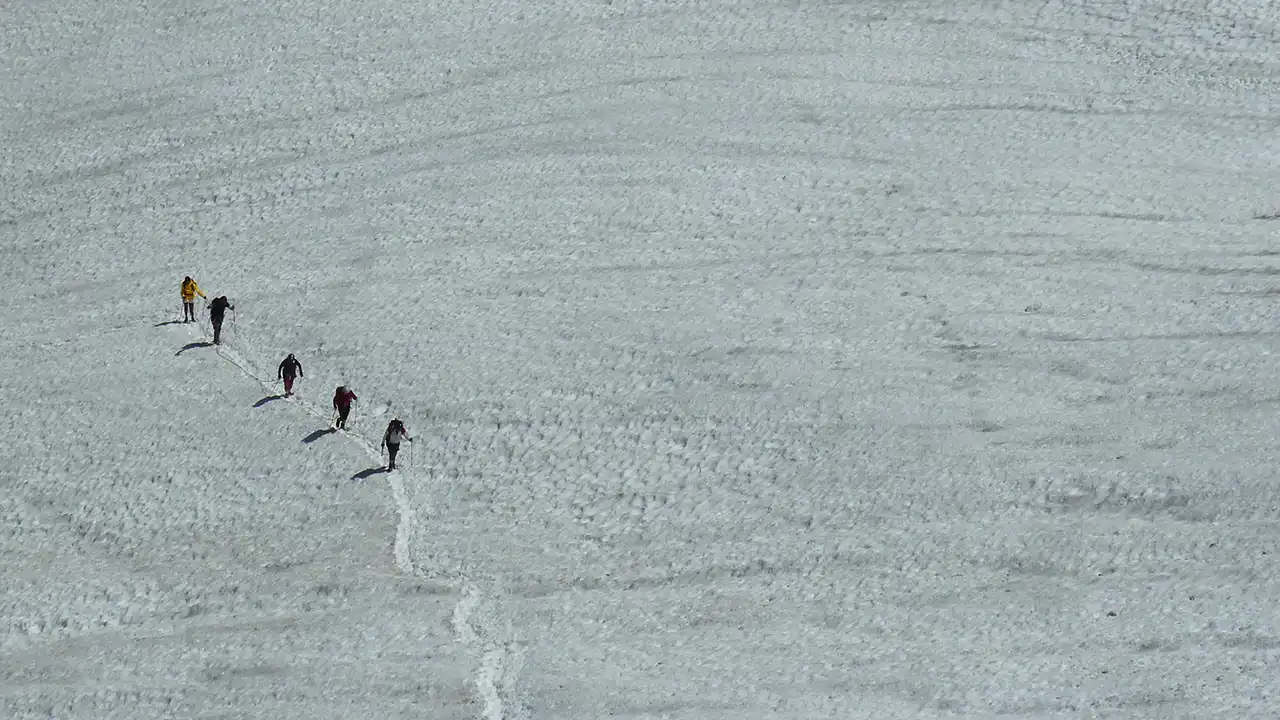Some trails don’t just take you places they take you within. The Panwali Kantha Trek, tucked quietly into the Garhwal Himalayas of Uttarakhand, is one such forgotten gem. It’s not overly hyped, not mobbed by crowds. And perhaps that’s what makes it so profoundly moving.
Winding through dense forests, crossing ridges drenched in silence, and finally unfolding into vast alpine meadows at over 3,300 meters Panwali Kantha feels like walking through a hidden chapter of the Himalayas one that few read, but those who do, never forget.
Why Choose the Panwali Kantha Trek?
Because you’re done chasing only peaks. You’re craving stillness, solitude, and spaces where the sky feels close enough to touch.
Located near Ghuttu village, this moderate trek lies along an ancient trail of the Char Dham Yatra, believed to have been walked by sages, sadhus, and seekers. The highlight? The wide, rolling bugyals (meadows) of Panwali Kantha are grasslands that turn emerald in summer and shimmer white in winter.
And all around you? Views of Gangotri, Kedarnath, Yamunotri, and Badrinath ranges, wrapped in mist, light, and quiet reverence.
Trek Highlights
Panwali Bugyals:
One of the most untouched, soul-nourishing meadows in Uttarakhand, stretching across the ridge like green silk.
Himalayan Viewpoints:
On a clear day, see all four Char Dham peaks in one sweeping glance, a rare Himalayan gift.
Forest Walks:
Walk through deodar, oak, and rhododendron forests where birdsong replaces phone pings.
Camping on the Ridge:
Spend a night under galaxies, above clouds, and beside glowing tents.
Spiritual Trail:
Feel the energy of ancient pilgrim paths, said to echo with centuries of silent devotion.
Trek Itinerary Overview
Day 1: Drive from Rishikesh to Ghuttu (Approx. 8 hours)
Begin your journey into the hills with a drive along the Bhilangana River. Ghuttu is a peaceful Himalayan town with deep mythological roots.
Day 2: Ghuttu to Panwali Kantha (10–12 km)
This is the most rewarding stretch. The trail ascends steadily through forests and opens up dramatically into alpine meadows. Camp near the edge of the meadow, with panoramic views all around.
Day 3: Panwali Kantha to Gaurmanda or return to Ghuttu
Either continue onward toward Gaurmanda (if doing a through-trek) or retrace your steps to Ghuttu. Descending offers new perspectives and quieter gratitude.
Optional Extension:
Continue to Triyuginarayan or Kedarnath via connecting trails for a longer spiritual + trekking journey.
Difficulty Level and Preparation
Panwali Kantha is a moderate trek, perfect for beginners who are ready to challenge themselves slightly and for seasoned trekkers looking for solitude.
- Elevation gain is gradual
- Best done over 2–3 days
- Steady pace is more important than speed
Fitness Tip: Walk 4–5 km daily for 2 weeks before your trek. Add in stair climbing and breathing exercises if possible.
Best Time to Visit
Summer (April–June): Blooming meadows, green landscapes, and clear skies
Autumn (Sept–Nov): Post-monsoon clarity and golden sunlight
Winter (Dec–Feb): Snow-covered meadows, surreal silence (but carry proper gear)
Avoid monsoon (July–Aug): Landslide-prone and slippery trails
Permits and Guidelines
No strict permits are required for Panwali Kantha currently, but always check local guidelines before starting.
Things to remember:
- Respect the forests and meadows no littering
- Avoid loud music and always greet locals with a humble Namaste
- Hire a local guide — for navigation, stories, and safety
Accommodation and Essentials
Stay Options:
- Camping: Best way to experience the ridge
- Homestays in Ghuttu: Warm, simple, and deeply comforting
What to Carry:
- Backpack with rain cover
- Thermal layers and down jacket (nights are cold!)
- Trekking shoes with ankle support
- Water bottle and snacks
- Sunscreen, torch, and camera
- Personal meds and a basic first aid kit
Panwali Kantha isn’t about speed or conquest. It’s about surrender. About watching how light moves across mountains. About the quiet in your chest when all you hear is the wind.
This isn’t a place for shouting summit selfies. It’s a place for sitting still, listening, and remembering how small and beautiful we are.







